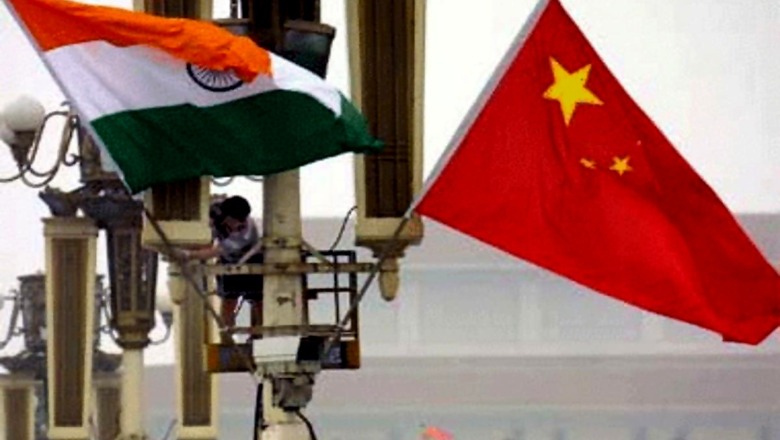
views
Historically, when China used to colonise Tibet, the main intention of Chinese rulers was to create a buffer state for security.
The onslaught by the Communist Party of China in the 20th century saw the forceful occupation of Tibet as an expansionist tool. By forcefully occupying Tibet, China could establish direct territorial links with India, Nepal, Bhutan and Pakistan with an aim to make territorial claims in future. China since the days of its founder Mao Zedong sees Nepal, Bhutan and Indian provinces of Ladakh, Sikkim and Arunachal Pradesh as five fingers of Tibet and therefore, a Chinese territory.
Chinese expansionist designs don’t recognise the Indian step to make Ladakh and Jammu & Kashmir an integral part of India. China doesn’t accept the status-quo on the Line of Actual Control (LAC) as agreed by India and China.
The modern day China, in future, can scale up water war through its control of the Tibetan water.
Weaponise Tibetan Water
China can use the ‘water tower of Asia’, as Tibet is known as, to bargain or threaten many Asian nations. Ten major Asian rivers including Indus, Sutlej, Brahmaputra, Irrawady, Salween, Yellow, Yangtze and Mekong originate in Tibet and they flow through countries like China, India, Bangladesh, Nepal, Bhutan, Pakistan, Vietnam, Thailand, Burma, Cambodia and Laos. These rivers are the lifeline of around two billion people in South and Southeast Asia.
Through the forceful occupation of Tibet, China, having the upper riparian control, can refuse to share the state and dynamics of water flow (hydrological data), can obstruct, or divert water flow in case of a conflict as it did with India in recent past.
After the Doklam crisis in 2017, China didn’t share Brahmaputra and Sutlej rivers’ hydrological data for a year with India. Upper riparian data is necessary for lower riparian nations and states for water resource management, flood modelling and other related activities.
China is already on a dam building spree, making multiple dams on Tibet’s translational rivers flowing to other countries. The country has made four dams on the Brahmaputra River that is known as Yarlung Tsangpo in Tibet, and there are reports that China plans to build another dam, in fact a super dam, on the downstream of the river near LAC.
According to China’s state-run media Global Times report, the planned Brahmaputra dam could generate three times more hydropower than the Three Gorges Dam. The Three Gorges Dam currently has the largest installed hydropower capacity in the world. According to the report, the proposal has been clearly put forward by China’s 14th Five-Year Plan (2021-25).
That additional super dam, with other dams being built or operated, will only add to the water flow downwards to India and Bangladesh. Brahmaputra is the lifeline for north-eastern India and Bangladesh.
We can gauge how China’s dam building spree on Brahmaputra can affect India and Bangladesh in future by the Mekong river example.
Mekong River originates in Tibet and flows through Myanmar, Laos, Thailand, Cambodia and Vietnam. Around 60 million people are dependent on the river which has also the largest inland fishery in its river basin.
A US government funded study, published by Lower Mekong Initiative and the Sustainable Infrastructure Partnership in Bangkok in April 2020, says the dams built by China on the river had altered the natural flow of the river that resulted in severe lack of water in the lower riparian countries in 2019. According to an analytical report on the National Geographic, the severe drought saw water levels drop to its lowest level in 100 years.
The Tibetan President-in-Exile, Lobsang Sangay, said in 2017 that diversion of rivers in Tibet is imminent as only 12% Chinese have freshwater access. There are reports that China is constructing a tunnel to divert the Brahmaputra river flow, though China has denied it. Chinese policy makers have always thought of diverting waters of rivers like Brahmaputra and others to Xinjiang’s vast deserts and arid lands.
China has 18% of the world’s population but only 6% of freshwater resources and most of the existing major river systems including the major ones, the Yellow River and the Yangtze River, and freshwater lakes are badly affected by pollution. Humans cannot use 1/3rd of surface water and 2/3rd of ground water, says the Chinese Ministry of Environmental Protection.
And 80% of freshwater resources are in south China, while north China with 41% of Chinese population, 45% of GDP, 46% of Chinese industries, 38% of agriculture and 50% of power generation capacity has only 20% freshwater resources. People in 11 north China provinces are under water stress levels as defined internationally. They get less than 1,000 cubic metres per person per year.
Mao Zedong in 1952 had said that south China had plenty of water while north China had much less. He opined that south China should divert water to north China. China, it seems, is following that opinion as a dictum now.
The country is developing ‘South-to-North Water Diversion Project’, the most expensive water project in the world so far. Yangtze River in the south China has been connected with dried North China reasons. An eastern route was opened in 2013. Beijing is one of the targeted areas where the project was completed in 2014. In the central route of the project, water to the Chinese capital city reaches from Hubei in central China in 15 days travelling a distance of 895 miles.
Another link of the project planned involves use of Tibetan Plateau to link Yangtze River and Yellow River. It has been postponed so far due to environmental concerns like earthquakes and landslides and social issues but Chinese policymakers are considering it again after the economic slowdown in China that was further exacerbated by the Covid-19 crisis.
Read all the Latest News, Breaking News and Coronavirus News here




















Comments
0 comment